-
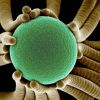 +34 +1
+34 +1Superlensing without a super lens: physicists boost microscopes beyond limits
Attempts to break the diffraction limit with “super lenses” have all hit the hurdle of extreme visual losses. Now physicists at the University of Sydney have shown a new pathway to achieve superlensing with minimal losses, breaking through the diffraction limit by a factor of nearly four times. The key to their success was to remove the super lens altogether.
-
 +28 +1
+28 +1Physics-Defying Quasiparticles Could Open a Whole New World of Microscopy
To pry into the private lives of objects in the microscopic domain (and beyond), scientists often rely on extremely bright sources of light.
-
 +15 +1
+15 +1Visualizing the inside of cells at previously impossible resolutions provides vivid insights into how they work
Many microscopy techniques have won Nobel Prizes over the years. Advancements like cryo-ET that allow scientists to see the individual atoms of cells can reveal their biological functions.
-
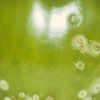 +15 +1
+15 +1Can Bacteria Solve Our Plastic Pollution Problem?
About 360 Million years ago, a toxic material that could not easily be broken down arose on planet Earth. The stuff would persist for thousands of years, amassing on land (and especially in forests) in daunting piles. These mounds stuck around for millions of years, so long that a heap of them fossilized. Today, humans dig up these deposits to burn as fossil fuel.
-
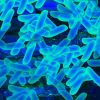 +3 +1
+3 +1A bifidobacterial protein that can reduce inflammation in COVID-19 found by a RUDN geneticist
A geneticist from RUDN University studied the effect of Bifidobacterium (intestinal bacteria) on the inflammatory process and discovered that their surface protein is capable of stopping excessive or uncontrollable inflammation, like the one observed in COVID-19 patients. A fragment of this protein can be used as an anti-inflammatory medication when treating coronavirus and other diseases. The results of the study were published in the Anaerobe journal.
-
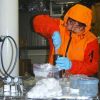 +3 +1
+3 +1Researchers revive bacteria from the era of the dinosaurs
Far from the life-sustaining light of the sun, the deep sea floor appears barren and desolate. Its appearance, however, belies a thriving bacterial ecosystem that may contain as much as 45% of the world’s biomass of microbes. This ecosystem is fuelled by what is known as marine snow—a steady shower of small, nutrient-rich particles that fall like manna from the ocean layers near the surface, where photosynthesis takes place.
-
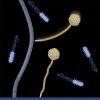 +4 +1
+4 +1Peering into the secrets of phages to see how they kill bacterial superbugs
A research collaboration involving Monash University has made an exciting discovery that may eventually lead to targeted treatments to combat drug-resistant bacterial infections, one of the greatest threats to global health.
-
 +21 +1
+21 +1Scientists Awaken Deep Sea Bacteria After 100 Million Years
The microbes had survived on trace amounts of oxygen, and were able to feed and multiply once revived in the lab.
-
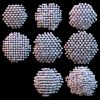 +21 +1
+21 +1Scientists Capture 3D Images of Nanoparticles, Atom by Atom
Since their invention in the 1930s, electron microscopes have helped scientists peer into the atomic structure of ordinary materials like steel, and even exotic graphene. But despite these advances, such imaging techniques cannot precisely map out the 3D atomic structure of materials in a liquid solution, such as a catalyst in a hydrogen fuel cell, or the electrolytes in your car’s battery.
-
 +24 +1
+24 +1Copper Destroys Viruses and Bacteria. Why Isn’t It Everywhere?
In 1852, physician Victor Burq visited a copper smelter in Paris's 3rd arrondissement, where they used heat and chemicals to extract the reddish-brown metal. It was a dirty and dangerous job. Burq found the facility to be "in poor condition," along with the housing and the hygiene of the smelters. Normally, their mortality rates were "pitiful," he observed.
-
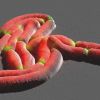 +5 +1
+5 +1Bacteria under the microscope: a new growth model for tuberculosis
For centuries, scientists have peered down the lens of a microscope and watched as bacteria – some circular, others rod-shaped – multiply before their eyes. Yet, much about the details of how cells grow and divide is still hidden, in part because the technology to resolve this process is lacking. A team of engineers, biologists, and physicists at EPFL have now used a combination of state-of-the-art microscopes to uncover new insights into the growth of mycobacteria, a family that includes the bacillus responsible for tuberculosis.
-
 +3 +1
+3 +1New Research May Help in The Fight Against Antibiotic Resistance
Scientist from KU Leuven develop a new method for fighting antibiotic resistance that attacks bacteria’s ability to communicate among each other.
-
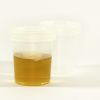 +9 +1
+9 +1Urine fertilizer: 'Aging' effectively protects against transfer of antibiotic resistance
Recycled and aged human urine can be used as a fertilizer with low risks of transferring antibiotic resistant DNA to the environment, according to new research from the University of Michigan. It's a key finding in efforts to identify more sustainable alternatives to widely used fertilizers that contribute to water pollution. Their high levels of nitrogen and phosphorus can spur the growth of algae, which can threaten our sources of drinking water.
-
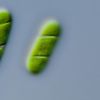 +18 +1
+18 +1Genes borrowed from bacteria allowed plants to move from sea to land
Natural genetic engineering allowed plants to move from water to land, according to a new study by an international group of scientists from Canada, China, France, Germany and Russia. “This is one of the most important events in the evolution of life on this planet—without which we as a species would not exist,” said University of Alberta genomicist and study co-investigator Gane Ka-Shu Wong.
-
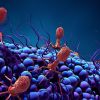 +7 +1
+7 +1Engineered viruses could fight drug resistance
In the battle against antibiotic resistance, many scientists have been trying to deploy naturally occurring viruses called bacteriophages that can infect and kill bacteria. Bacteriophages kill bacteria through different mechanisms than antibiotics, and they can target specific strains, making them an appealing option for potentially overcoming multidrug resistance. However, quickly finding and optimizing well-defined bacteriophages to use against a bacterial target is challenging.
-
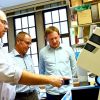 +14 +1
+14 +1Researchers unlock potential to use CRISPR to alter the microbiome
Researchers at Western University have developed a new way to deliver the DNA-editing tool CRISPR-Cas9 into microorganisms in the lab, providing a way to efficiently launch a targeted attack on...
-
 +26 +1
+26 +1Ancient life awakens amid thawing ice caps and permafrost
The moss was faded and torn but sported a verdant hue — a possible sign of life
-
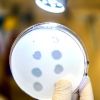 +29 +1
+29 +1These superbug-fighting viruses are making a comeback
A broad-spectrum look at the future of phages
-
 +4 +1
+4 +1Flying insects in hospitals carry 'superbug' germs
Many flies and flying insects in hospitals carry bacteria that could pose an infection risk to patients, and more than half of them carry the types that resist antibiotics, a new study says.
-
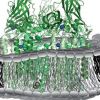 +26 +1
+26 +1Methane-consuming bacteria could be the future of fuel
Known for their ability to remove methane from the environment and convert it into a usable fuel, methanotrophic bacteria have long fascinated researchers. But how, exactly, these bacteria naturally perform such a complex reaction has been a mystery. Now an interdisciplinary team at Northwestern University has found that the enzyme responsible for the methane-methanol conversion catalyzes this reaction at a site that contains just one copper ion.
Submit a link
Start a discussion




















